Frilled lizards are odd-looking creatures that live in Australia and New Guinea. This name comes from the large flaps of skin, known as “frills,” that lie on its neck.
Though the frill usually lies flat, this species can expand its frill as a defense mechanism to scare away predators. When expanded, the frill makes this lizard look much larger than it actually is. Read on to learn about the frilled lizard.
Description of the Frilled Lizard
These lizards are relatively long, though not quite as large as some of the other Australian reptiles. They grow a little over three feet long at their largest, and usually only weigh a pound or two.
Their scales are a grayish-brown color, to better match bark, sand, and other similar surfaces. When their frill is down, they look very much like any other lizard. However, when they lift their frill, it creates a large, circular surface around their face.
Interesting Facts About the Frilled Lizard
These lizards obviously have a singularly interesting adaptation that sets them apart. That is not, however, the only interesting thing about them! Learn more about this species below.
- Silver Screen Inspiration – The dinosaur Dilophosaurus, a character in the movie Jurassic Park, is based off of a real dinosaur. However, Dilophosaurus did not have the large colorful frill that you see in the movie. So who was the inspiration behind this frill? None other than the frilled lizard of course!
- Large and in Charge – When predators decide to make a meal out of this lizard, they meet a much larger looking creature than they anticipated. This is because, when fully extended, the frilled lizard’s frill is about a foot across.
- Spooking Skills – If the large frill isn’t enough, this reptile has a few other tricks up its sleeve. They also open their mouths, hiss ferociously, and rear up on their hind legs. From this position they even charge at their attacker while walking on their rear legs!
- Tree Dweller – In most videos of this animal, you see it dashing around on the ground with its frill open. Most videos also include the lizard rushing menacingly at the camera. What most people do not realize is that this species lives most of its life up in the trees. In fact, they very rarely climb to the ground, because they are arboreal lizards.
Habitat of the Frilled Lizard
This lizard lives in a variety of different habitats, all of which have some type of tree cover for them to climb and hide in. They often live in woodlands, tropical forests, jungles, and more.
As arboreal creatures, they mostly stay up in trees, rather than walking on the ground. While they will live in many different ecosystems, they do require habitats with plenty of trees and vegetation.
Distribution of the Frilled Lizard
This species lives throughout northern Australia and southern New Guinea. In Australia, they live from the northernmost point of Western Australia through the Northern Territory and into Queensland. This species also lives along the coast of southern Papua New Guinea. As a popular exotic pet, this species also lives in households
Diet of the Frilled Lizard
Frilled lizards are primarily insectivores, though they do occasionally eat small animals, typically mice. Their primary prey includes moths, beetles, ants, termites, larvae, spiders, and small rodents.
They will also sometimes feed on other reptiles. Rather than chasing down their prey, this lizard uses its camouflage to lie in wait for prey to approach it.
Frilled Lizard and Human Interaction
Conflicts between frilled lizards and humans are few and far between. These reptiles mostly hide in the trees away from human interaction.
On the occasions where they do come face-to-face with people, their bites are mostly harmless, though somewhat painful. While they do face some habitat destruction, the IUCN lists this species as Least Concern.
Domestication
Humans have not domesticated frilled lizards in any way.
Does the Frilled Lizard Make a Good Pet
This species can actually make a good pet, but it is still a wild animal. As exotic pets, they require special care and consideration, as well as knowledgeable veterinarians. If you can properly care for and socialize it, a frilled lizard can make a good pet.
Frilled Lizard Care
One of the main things to remember when keeping frilled lizards is that if they are opening their frill it means that they are frightened or threatened. With that in mind, you should avoid having your lizard display its frill, because stress can lead to illness.
These reptiles grow quite large, so you will need an adequately large habitat to house them. You should also have plenty of vertical space in the habitat, with a variety of tree branches and hiding places to climb in. Like all reptiles, they need special lighting and heat sources. You should implement these, along with their diet, under the direction of a veterinarian or breeder.
Behavior of the Frilled Lizard
These reptiles are arboreal, which means they live in trees rather than on the ground. They are diurnal, and most active during the day when fewer predators are roaming.
Rather than actively searching for food, they rest on a tree branch or rock and wait for prey to approach them. Frilled lizards are also solitary, and defend a territory from other lizards. Males fight over territory, and over breeding rights.
Reproduction of the Frilled Lizard
Breeding occurs with the oncoming wet season, and males fight one another to impress females. After mating, the female lays as many as 25 eggs, which have soft, leathery shells. She buries them beneath the ground.
The sun incubates the eggs, and it usually takes several months for them to hatch, depending on the temperature. Young frilled lizards are fully independent at hatching, and receive no maternal care.


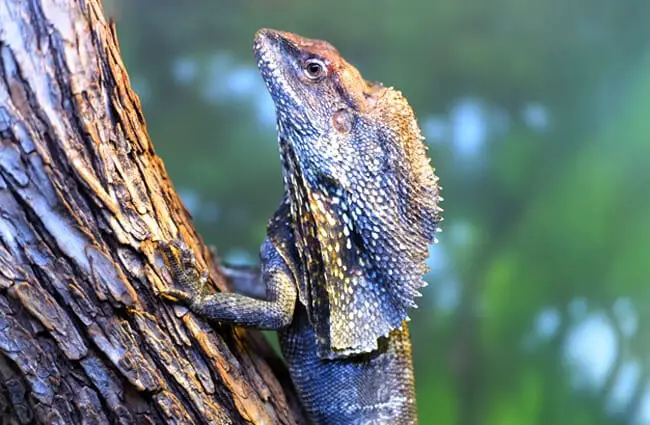
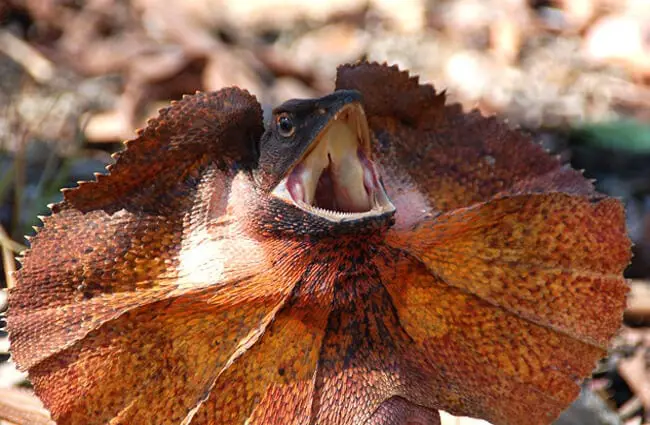


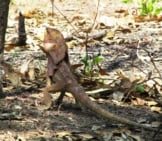
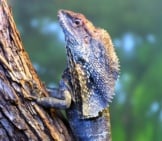

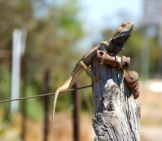
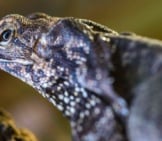
![Red Angus Closeup of a beautiful Red Angus cowPhoto by: U.S. Department of Agriculture [pubic domain]https://creativecommons.org/licenses/by/2.0/](https://animals.net/wp-content/uploads/2020/03/Red-Angus-4-238x178.jpg)




![Red Angus Closeup of a beautiful Red Angus cowPhoto by: U.S. Department of Agriculture [pubic domain]https://creativecommons.org/licenses/by/2.0/](https://animals.net/wp-content/uploads/2020/03/Red-Angus-4-100x75.jpg)

